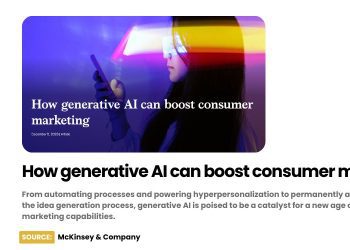In 2024, marketers need to deliver for their businesses in new and unprecedented ways. CMOs have more power than ever to shape the fortunes of their brands, says WFA President and Mastercard CMO Raja Rajamannar.
The landscape of marketing is evolving, providing a fertile ground for innovation and creativity.
We have more power than ever to redefine how businesses connect with their target audience and achieve unprecedented success.
In such a dynamic environment, the potential for marketers to shape the fortunes of their businesses is more promising than ever before.
We know that 2024 will surprise us and present new and unforeseen challenges, but we must always remember that marketers are not just witnesses to change but active architects, able to steer their organizations toward new horizons of achievement and growth.
My prediction is that three areas will be critical on this journey:
A focus on purpose
Marketing is pivotal for business success, especially when it comes to engaging people through their preferred methods and channels. Aligning such efforts with a clear purpose, tied to clear business goals, establishes trust with consumers.
In 2024 I hope to see more marketers embed purpose-driven marketing with an emphasize on inclusivity and sustainability. Inclusivity not only benefits business, but also society: marketers hold the responsibility to ensure everyone can thrive, as individuals and also in the world in which we collectively live.
The WFA has been working to help our community understand both issues. To give you an example: the Global Alliance for Responsible Media (GARM) has worked in close coordination with Ad Net Zero to create a Global Media Carbon Emissions Framework – that will be released in early 2024.
I am proud too that the WFA continues to push the need for greater diversity in our industry as well as in the messages we help create. The 2023 DEI Census sadly found that in two years the marketing industry has not moved the needle in terms of Diversity, Equity and Inclusion. More work is needed if we are to be able to truly access the best talent and authentically connect with more people.
Leveraging technology
The strategic integration of AI will be mission critical this year: marketers should seek to leverage AI to gain deeper insights into consumer behaviour, personalize experiences and streamline decision-making processes.
AI increases efficiency, reduces costs and encourages faster speed-to-market. The evolving nature of these technologies and the opportunities they present allows marketers to make unprecedented contributions to overall business success.
However, with opportunity comes challenge, contemporary technology often presents complex issues. Brands must be mindful of data concerns and privacy. The WFA’s forthcoming work on Generative AI will allow brands to create a vendor risk assessment framework to help it evaluate threats when working with GenAI tool providers.
Brand safety
Ensuring brand safety remains crucial in this evolving digital landscape. Robust industry-wide measures are vital to preserve reputation and consumer trust. In this discerning digital era, prioritizing brand safety is non-negotiable for successful and responsible marketing.
This coming year, I hope to see more marketing teams integrate risk management into their department to quickly identify and mitigate threats, reinforcing the brand’s commitment to its values.
When we get this right, we can make a real difference. In a year marked by major global conflict, GARM’s Brand Safety work has played a significant role providing indispensable support for media leaders and brand-safety experts.
Successful marketers will not merely adopt these elements as trends, but use them as essential tools for achieving business success. By aligning with purpose, harnessing the potential of AI and focusing on brand safety, marketers will not only be able to meet the evolving needs of consumers, but also drive tangible results that propel their businesses forward.









